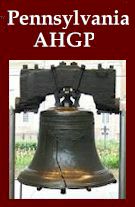Market Houses ~ Farmers Markets
Market Houses
When the City was first settled, the Market was confined to
Front and High Streets, the site of the present Fish Market. Af-wards,
the Market Houses were extended in High Street to Fourth Street,
and within a few years, continued to Eighth Street, their
present extent, on the Eastern Section of High Street.
In 1836, the "Columbia Rail Road" having been extended, from
Broad Street, through High Street to Dock Street, the old Market
Houses, and the ancient Court House, at the comer of Second and
High Streets were removed, to give place, to the light and airy
structures, at present in use, and to secure more room for the
free passage of the rail road.
An ample Market has been constructed, in Second Street, between
Pine and Cedar Streets: This has been recently widened and for
its length, presents more accommodation than any one in the
City.
West of Broad Street, Market Houses extend in High Street, for
several Squares. In Callowhill Street, Market extend from Fourth
to Eighth Street. In Spring Garden Street, ample provision has
been made, for an extensive range of Markets, from Sixth Street,
toward Schuylkill and several squares of Market Houses have been
erected. This wide and elegant avenue will in time, become
highly ornamental, to the improved District Spring Garden. A
range of Market Houses extend in North Second Street, from
Coates Street to Poplar Lane. Market Houses have been erected in
East and west Kensington and in Southwark. An extensive range of
Markets have been erected in Shippen Street, which has been
amply widened for the purpose, from Third to Fifth Streets. In
the South-eastern part of Southwark, a small Market House, known
as the "Wharton Mart," has been erected: And another, near
Eighth Street, below Fitzwater Street.
William Penn Market
An Act of Incorporation has been obtained, for the erection of a
Market, between Spruce and Pine Streets, on the site, now known
as ''Portland Lane," Elizabeth Street and Middle Alley, between
Sixth and Seventh Streets.
Provisions, Vegetables, Fruits and Market Days
The Philadelphia Markets present an ample supply of all kinds of
meats, poultry, birds, wildfowl, fish, lobsters, crabs, oysters
and in the winter season, an abundance of venison, &c. The
supply of vegetables, peaches, apples, cherries, and every other
kind of fruit, is equally abundant. The Markets are supplied
every day of the week, except the Sabbath; but Wednesdays, and
Saturdays are established, as especial Market Days, on which
occasions the supplies, particularly after midsummer, afford a
most gratifying spectacle to those who delight in the bounties
of nature. On these days, the Market Houses are filled, and the
Streets leading to and from the Markets seem almost to groan,
with the loaded baskets, piled in every direction. Ranges of
wagons extend through Second and Market Streets, for more than
three miles. Inspectors of weights, superintend the Market,
whose duty it is also to see that wholesome provisions are
exposed for sale, and the laws against huckstering, establish
severe penalties for forestalling.
The Markets within the limits of the City produce an income of
$35,198.56, derived from 307 butchers; 651 farmers and 92
dealer's stalls; 123 vegetable, 52 fish-market, 195
inter-section and 12 fish-wagon stands.
History of Philadelphia

|
![]()

![]()
